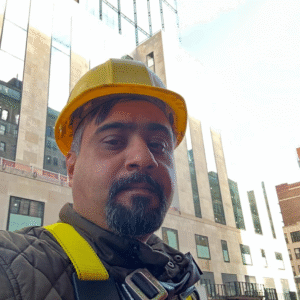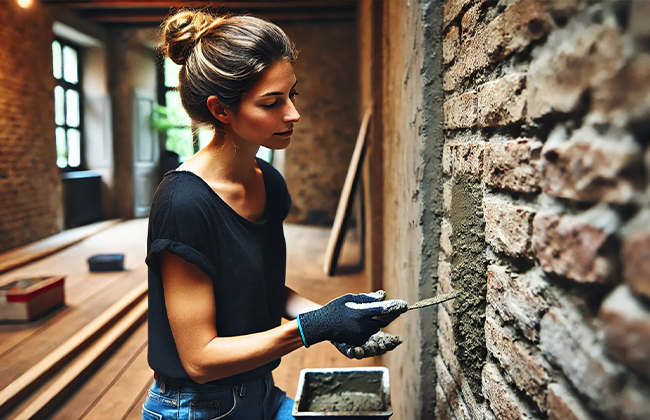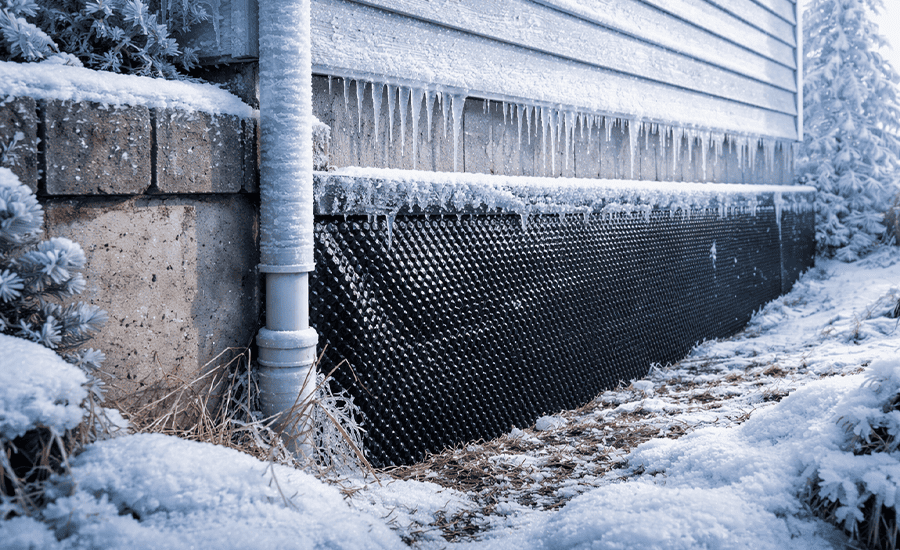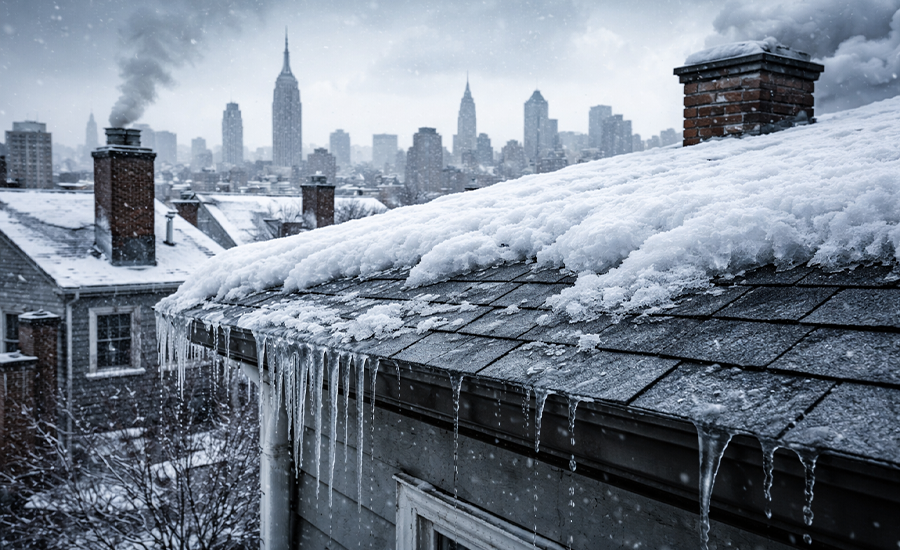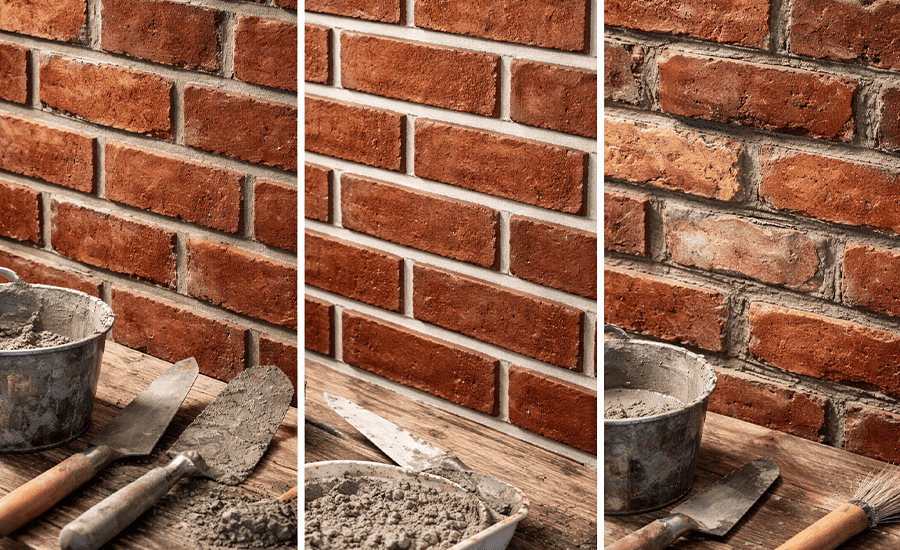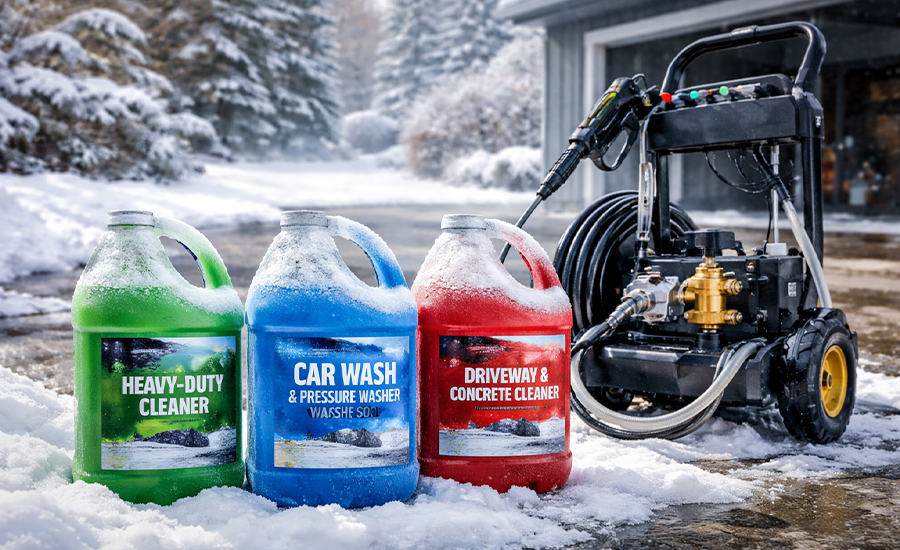Are you planning to enhance your home with a stylish, durable finish? Learning how to install thin brick could be the perfect solution. This guide will walk you through every step of the process, ensuring you know exactly how to handle each phase from the initial surface preparation to the final touches, making your installation smooth and successful.
What is Thin Brick?
Thin brick, also known as brick veneer, is essentially a slice of real brick used primarily for decorative purposes. Unlike traditional bricks, which are used structurally, thin bricks are lightweight and flexible, making them perfect for both interior and exterior enhancements. They provide the aesthetic appeal of real brick without the need for heavy-duty structural support, which simplifies installation and opens up a range of design possibilities.
Defining Thin Brick
Thin brick is manufactured from the same materials as full-sized bricks but is cut to a thinner profile. Typically, these bricks are about 1/2 to 3/4 inches thick, making them ideal for installation on surfaces where full-sized bricks would be impractical due to weight and space constraints. This makes them a popular choice for revamping spaces with a classic brick look, such as kitchen backsplashes, fireplace surrounds, or exterior facades.
Advantages of Choosing Thin Brick
One of the main benefits of thin brick is its versatility. You can achieve the charming and timeless look of brick walls in your home or business without the extensive labor or costs associated with traditional masonry. Thin brick is also adaptable to various styles, from rustic to modern, allowing for personalization of your space.
Additionally, thin brick installation is relatively straightforward, which makes it a popular project for DIY enthusiasts. The lighter weight reduces the structural demands on buildings, making it safer and more feasible for older structures or those not originally designed to bear the weight of full brick. Moreover, thin brick requires minimal maintenance once installed and can last for decades if properly cared for, providing a durable and long-lasting surface that adds value to any property.
Planning Your Thin Brick Project
Starting a thin brick project involves careful planning to ensure everything goes smoothly. From measuring your space accurately to selecting the right style of thin brick, each step is crucial to achieving the desired outcome. Let’s dive into how you can get your project off to a great start!
Measuring Your Space
The first step in planning your thin brick installation is to measure the area where the bricks will be applied. This isn’t just about getting the length and width; it’s about understanding every aspect of the space. Start by measuring the height and width of each wall to calculate the total square footage. Remember, accuracy is key, so double-check your measurements. You’ll also want to consider any unique features of the wall, like windows or doors, which might require special brick cuts. Having precise measurements will help you estimate the number of thin bricks needed and avoid unnecessary wastage.
Selecting the Right Thin Brick
Choosing the right thin brick is not only about finding a color and texture that you like; it’s about understanding what fits the architectural style of your space and meets your durability needs. Thin bricks come in a variety of colors, textures, and sizes, mimicking everything from rustic, weathered bricks to sleek, modern designs. Consider the overall design theme of the area where the bricks will be installed. Do you want a traditional look or something more contemporary? Also, think about the environment—the bricks will need to withstand the conditions they’ll be exposed to, whether it’s the heat of a kitchen or the moisture of a bathroom.
When planning, also keep in mind the finish and color consistency of the bricks. Samples can be quite useful here. Obtain a few samples from suppliers and compare them in the actual light where they will be installed to see how they truly look. This step helps ensure that you’ll be pleased with the final appearance, as lighting can significantly affect how brick colors are perceived.
With your space measured and the perfect thin brick selected, you’re all set to gather your materials and tools, making sure you have everything needed for a smooth installation process. Let’s gear up and move on to the next phase!

Transform your home with expert masonry services. Contact us today for a free consultation.

Gathering Your Tools and Materials
Before diving into the actual installation of your thin bricks, it’s crucial to gather all the necessary tools and materials. Having everything on hand not only makes the process smoother but also prevents any frustrating pauses. Let’s go over what you’ll need to ensure you’re fully prepared to bring your vision to life.
Tools Required
To install thin brick, you’ll need a set of specific tools. These are essential for handling the materials and ensuring that each brick is securely and neatly placed. Here’s what you should have:
- Measuring Tape: For precise measurements of your space and thin brick.
- Level: To ensure that all your bricks are aligned and even.
- Notched Trowel: Used for spreading adhesive evenly on the wall.
- Brick Cutter or Wet Saw: For cutting bricks to fit corners and edges.
- Mixing Paddle and Bucket: For preparing the mortar or adhesive.
- Grout Bag and Jointer: For applying and smoothing the mortar between the bricks.
- Safety Gear: Including gloves, goggles, and a dust mask, especially important when cutting bricks or mixing mortar.
These tools are vital for a smooth installation process and will help you achieve a professional-looking finish.
Materials Checklist
Along with the right tools, you’ll need the correct materials. Here’s a checklist to ensure you have everything:
- Thin Bricks: Calculate based on your earlier measurements, adding about 5-10% extra for cuts and wastage.
- Adhesive or Mortar: Choose a high-quality product suitable for the type of thin brick you are using.
- Mortar Mix (if needed): For filling in the joints between the bricks.
- Sealer: To protect the bricks and mortar from moisture and dirt (optional depending on the location and type of installation).
- Spacers: To help maintain even gaps between the bricks for a uniform appearance.
Gathering all these materials beforehand will streamline your installation process, allowing you to focus on the task at hand without any unnecessary interruptions. With your tools and materials ready, you’re all set to begin the detailed installation process. Let’s get your project started on the right foot!
Step-by-Step Installation Guide
Starting your thin brick installation journey can be both exciting and rewarding. This section provides a clear, step-by-step process that you can follow to ensure your thin bricks are installed effectively and beautifully. Let’s break down each phase to get a solid understanding of how to proceed.
1. Preparing the Installation Surface
The first step: ensuring a good installation starts with a well-prepared surface. Make sure the wall or area where you plan to install the thin brick is clean, dry, and smooth. Remove any wallpaper, flaking paint, or debris. If you’re installing over a surface that’s uneven, you might need to apply a layer of backer board or a skim coat of mortar to create a level surface. Use a level to check the wall’s evenness, as this will prevent any uneven lines once you start placing the bricks.
2. Applying Adhesive and Setting Bricks
With your surface prepped, it’s time to start setting your bricks. Spread a thin layer of adhesive on the wall using a notched trowel. Work in small sections to prevent the adhesive from drying out before you can set the bricks. Press each thin brick firmly into the adhesive, using spacers between them to ensure consistent joint sizes. It’s helpful to periodically step back and view your work from a distance to check for alignment and make any necessary adjustments.
3. Filling Joints with Mortar
Once all the bricks are in place and the adhesive has set (typically after 24 hours), you can begin filling the joints with mortar. If you’re aiming for a more traditional look, use a grout bag to pipe the mortar into the joints, much like icing a cake. Then, use a jointer tool to smooth and compress the mortar, giving a clean, finished look. This step is crucial as it not only affects the appearance but also the durability of the installation.
4. Curing and Cleaning Up
After filling the joints, allow the mortar adequate time to cure. This curing process is vital for achieving the strength and longevity you expect from brick. The time required can vary based on the climate and the product used, but generally, a period of 48-72 hours is recommended. Once cured, clean up any excess mortar from the brick faces with a damp cloth. Avoid using harsh chemicals that might damage the brick’s surface.
With the bricks securely installed and the joints filled, your project is almost complete. All that’s left are the final touches and some simple maintenance to keep your new wall looking its best for years to come. Let’s move on to those finishing steps and discuss how to maintain your beautiful new addition.

Transform your home with expert masonry services. Contact us today for a free consultation.

Finishing Touches and Maintenance
Now that your thin bricks are properly installed, let’s focus on the finishing touches and the maintenance steps that will keep your installation looking great and lasting long. This part of the process is just as important as the installation itself because it protects your project and enhances its appearance.
Applying Sealant and Enhancements
Applying a sealant is a crucial step in finishing your thin brick project. Sealants provide a protective layer that helps prevent moisture absorption and protects against stains, which is especially important in areas exposed to water or heavy wear. Choose a sealant that’s appropriate for the location of your bricks—interior or exterior—and make sure it’s compatible with the type of brick you’ve installed. Application is straightforward:
- Ensure the bricks and mortar are completely dry.
- Apply the sealant with a brush or roller, covering all surfaces evenly.
- Allow it to dry according to the manufacturer’s instructions.
Besides sealants, you might consider other enhancements like color enhancers to bring out the depth and richness of your bricks’ color, especially if you’ve chosen a vibrant or unique shade.
Maintenance Tips for Longevity
Maintaining your thin brick surface is not labor-intensive but does require regular attention to ensure it continues to look its best. Here are some simple tips:
- Regular Cleaning: Dust and wipe your brick surfaces regularly with a soft cloth or brush. For deeper cleans, use a mild detergent mixed with water, but always avoid harsh chemicals and abrasive scrubbers that could damage the brick.
- Immediate Stain Removal: If spills occur, clean them up immediately to prevent staining. Use a gentle cleaner and rinse the area thoroughly with water.
- Inspection: Periodically inspect the bricks and mortar for any signs of damage or wear, such as cracks or loose bricks. Early detection will make repairs easier and less costly.
- Re-Sealing: Depending on the environment and exposure to elements, re-seal the brickwork every few years to maintain its resistance to moisture and stains.
With these final touches and regular maintenance, your thin brick installation will not only look professional but will also stand the test of time, maintaining its beauty and structural integrity. Remember, a little care goes a long way in preserving the aesthetic and functional qualities of your thin brick surfaces. Now that your installation is complete and well-maintained, you might run into some common issues down the road. Let’s discuss how to troubleshoot these effectively in the next section.
Troubleshooting Common Installation Issues

Even with careful planning and execution, you might encounter some common issues during or after your thin brick installation. This section aims to arm you with practical solutions to tackle these challenges effectively, ensuring your project looks great and holds up over time.
Solving Alignment Issues
Alignment issues can detract from the visual appeal of your thin brick installation. If you notice misaligned bricks during the installation:
- Adjust While Wet: If the adhesive hasn’t set, gently shift the bricks into place. Use a level to check the alignment and make sure each row is even.
- Use Spacers: Spacers are a handy tool to maintain even gaps between the bricks, ensuring a uniform layout. Consistently using spacers can prevent alignment issues before they start.
- Reposition Bricks: For bricks that have already been set, you may need to carefully remove them and reapply adhesive. Be sure to clean off any old adhesive from the brick and the wall before reapplying.
Addressing alignment early in the installation process is crucial, as it’s more difficult to correct after the adhesive has fully set.
Dealing with Adhesive Failures
Adhesive failures can cause bricks to loosen or fall off, compromising the integrity and appearance of your installation. Here’s how to handle these issues:
- Choose the Right Adhesive: Ensure that you’re using an adhesive suitable for thin brick and appropriate for your specific wall type and environmental conditions.
- Proper Application: Apply adhesive evenly across the back of each brick. Avoid “dotting” the adhesive, as this can create weak spots.
- Adequate Curing Time: Allow the adhesive ample time to cure according to the manufacturer’s instructions. Rushing this process can lead to poor adhesion.
- Repair Loose Bricks: If bricks do come loose, remove them carefully, clean the area and the back of the brick from all old adhesive, apply new adhesive, and reposition the brick.
By addressing these common installation issues promptly, you can ensure that your thin brick installation remains secure and aesthetically pleasing. Remember, taking the time to do things right during installation can save a lot of trouble later on. With these tips and solutions, you’re well-equipped to maintain the beauty and integrity of your thin brick project.
Conclusion
After reading this comprehensive guide on how to install thin brick, you should feel confident about starting your project. Whether you choose to DIY or seek professional assistance, understanding the essentials—from preparing the surface to applying the final sealant—ensures a successful outcome. If you’re looking for a professional contractor to install thin brick, don’t hesitate to contact us at (+1) 917-355-8556 for expert help.
FAQs
Q: What tools do I need to install thin brick?
A: To install thin brick, you’ll need a measuring tape, level, notched trowel, brick cutter or wet saw, mixing paddle, bucket, grout bag, and jointer. These tools help ensure that your installation is precise and professional-looking.
Q: How long does it take for the adhesive to set when installing thin brick?
A: The adhesive used to install thin brick typically sets within 24 hours. However, it’s crucial to follow the manufacturer’s instructions regarding drying times to ensure optimal adhesion and a durable finish.
Q: Can thin brick be installed over painted walls?
A: Yes, thin brick can be installed over painted walls, but the paint surface must be clean, dry, and free of any flaking. For best results, roughening the painted surface or applying a primer can help improve adhesive bonding.
Q: How do I maintain my thin brick installation?
A: Maintaining thin brick involves regular cleaning with a soft brush and mild detergent. Remove stains immediately to prevent discoloration. Periodically re-seal to protect against moisture and wear.
Q: What are the common issues when installing thin bricks and how can I solve them?
A: Common issues during thin brick installation include misalignment and adhesive failures. Using spacers can help maintain even spacing, and ensuring proper adhesive application and curing time can prevent bricks from becoming loose.
Q: How to install thin bricks on a wall?
A: Clean and prep the wall for a smooth surface, apply a high-quality adhesive with a notched trowel, and press the thin bricks firmly into place. Use spacers for even joints.
Q: How to install thin brick corners?
A: For corners, use corner thin brick pieces or cut the bricks to fit. Ensure each piece aligns tightly with the next to maintain a consistent joint and natural appearance.
Q: How to install a thin brick fireplace?
A: Ensure the surface is heat resistant, apply adhesive, and start from the bottom up. Use heat-resistant mortar and sealant for safety and durability.
Q: How to install a thin brick floor?
A: Prepare the floor by leveling and cleaning it, apply a flexible adhesive suitable for flooring, and lay the bricks tightly together. Seal the surface to prevent moisture penetration.
Q: How to install thin brick on plywood?
A: Secure the plywood base to the structure, apply a layer of cement board if needed for extra durability, and then install the thin brick using appropriate adhesive and mortar.
Q: How to install thin brick on drywall?
A: Ensure the drywall is stable and apply a primer or sealer for better adhesive grip. Use a construction adhesive designed for drywall applications to attach the thin bricks.
Q: How to install a thin brick exterior?
A: Start with a water-resistant barrier over the structural wall, install metal lath, apply a scratch coat of mortar, and then set the thin bricks with mortar.
Q: How do you apply thin brick?
A: You apply thin brick by spreading adhesive or mortar on the prepared surface, placing the bricks with slight pressure, and ensuring proper alignment and spacing.
Q: What adhesive to use for thin brick?
A: Use a high-quality construction adhesive or thinset mortar designed for thin brick applications, ensuring compatibility with your specific installation surface.
Q: What is the spacing for thin brick?
A: Typical spacing for thin brick is about 3/8 inch, but it can vary based on the aesthetic desired. Use spacers to maintain consistent joint spacing.
Q: Can I attach thin brick to drywall?
A: Yes, thin brick can be attached to drywall, but ensure the wall is stable and primed for better adhesion. Consider using a lightweight adhesive specifically suited for drywall.
Q: What size trowel for thin brick?
A: You commonly use a 1/4 inch notched trowel for thin brick to provide the right amount of adhesive for secure attachment without excessive squeeze-out.
Q: Can you use thinset for thin brick?
A: Yes, you can use thinset mortar to install thin brick, especially on surfaces like concrete or cement board where you need a strong bond.
Q: What is the best substrate for thin brick?
A: The best substrates for thin brick include cement backer boards, concrete, or masonry surfaces. These provide a durable, stable base for the bricks.
Q: Can you install thin brick over plywood?
A: Yes, you can install thin brick over plywood, but you must ensure the plywood is stable. You may also need to add a cement backer board for added durability.
Q: How thick is the mortar bed for thin brick?
A: The mortar bed for thin brick typically does not exceed 1/2 inch in thickness, which is sufficient to adjust for slight variations in brick size and to secure the brick in place.
Q: What are the best practices for ensuring the durability of brick veneer installations?
A: To ensure durability in brick veneer installations, use a high-quality, weather-resistant adhesive and mortar specifically designed for veneer applications. It’s crucial to prepare the substrate thoroughly by ensuring it is clean, dry, and stable. Additionally, applying a sealant after installation can help protect the veneer from moisture and weather elements, extending its life and maintaining its appearance.

Transform your home with expert masonry services. Contact us today for a free consultation.


